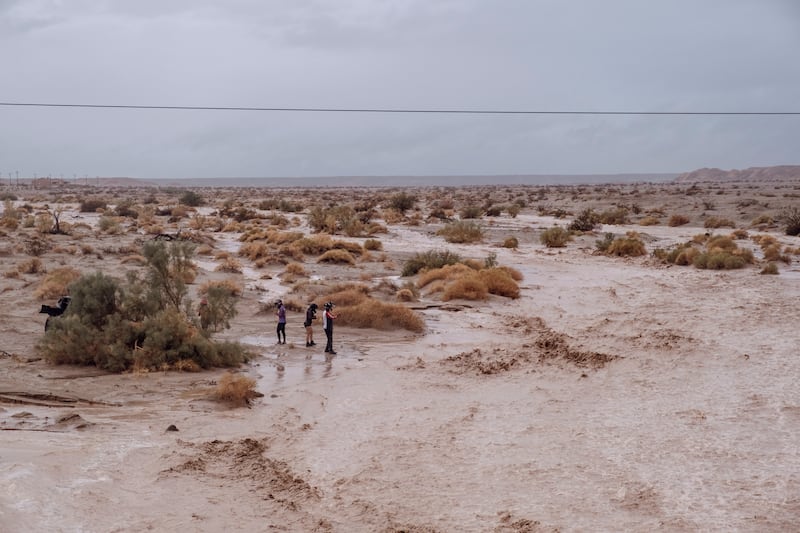Tropical Storm Hilary has hit southern California after inundating streets across Mexico’s Baja California peninsula with deadly floodwaters on Sunday.
The storm swamped roads and downed trees across the state as concerns grew that flash floods could strike in places as far north as Idaho.
Forecasters said Hilary was the first tropical storm to hit southern California in 84 years, bringing floods, mudslides, high winds, power cuts and the potential for isolated tornadoes.
The storm dumped more than 5.9in (15cm) of rain in some mountain communities and threatened more than an average year’s worth of rain in inland desert areas.
READ MORE
At least nine rainfall records have already been broken across southern California on Sunday, the National Weather service has said. They include in downtown Los Angeles, where 1.53in was recorded, breaking the previous record set in 1906.
Hilary made landfall along the Mexican coast in a sparsely populated area about 150 miles south of Ensenada on Sunday before moving through mudslide-prone Tijuana, threatening the improvised homes that cling to hillsides just south of the US border.
By Sunday evening, the storm had moved over San Diego and was headed north into inland desert areas.
As evening fell in California, the National Weather Service in Los Angeles warned of significant flooding risk throughout populous mountain areas along the coast northeast of Los Angeles.
“PLEASE ... STAY OFF THE ROADS,” the agency posted on X, formerly known as Twitter.

The storm made landfall on Sunday in Mexico, where it caused flash flooding in the Baja Peninsula that killed one person when their car was washed away. The cities of Ensenada and Tijuana closed all beaches and opened shelters at sports complexes and government offices.
In Tijuana, schools are to be closed on Monday and non-essential activities cancelled. The storm is expected to bring “life-threatening and locally catastrophic flash flooding” as it advances northwards over southern California, according to the US National Weather Service.
More than 20 flash flooding warnings were in effect across California on Sunday evening including in Los Angeles, San Bernardino, Death Valley, Ventura and Santa Clarita.
California’s governor, Gavin Newsom, has declared a state of emergency in 12 counties while in Nevada, to the north, Governor Joe Lombardo has also declared a state of emergency and activated 100 National Guard troops to assist with problems from predicted flooding
Mud and boulders spilled on to highways, water gushed on to roadways and tree branches fell in neighbourhoods from San Diego to Los Angeles.
Dozens of cars were trapped in floodwaters in typically hot and dry Palm Desert and surrounding communities across the Coachella Valley.
Crews pumped floodwaters out of the emergency room at Eisenhower Medical Centre in Rancho Mirage.
Hilary could hit other Western states of the US with once-in-a-century rains, with a good chance of it becoming the wettest known tropical cyclone to douse Nevada, Oregon and Idaho.
It was expected to remain a tropical storm into central Nevada on Monday before dissipating.
Southern California got another surprise in the afternoon as an earthquake with a preliminary magnitude of 5.1 hit near Ojai, about 128km (80 miles) northwest of downtown Los Angeles, according to the US Geological Survey.
It was felt widely and was followed by smaller aftershocks. There were no immediate reports of major damage or injury, according to a dispatcher with the Ventura County Sheriff’s Office.
President Joe Biden said his administration has been co-ordinating its response to the storm with California, Nevada and Arizona and is also monitoring the effects of the earthquake that hit California.– Agencies












